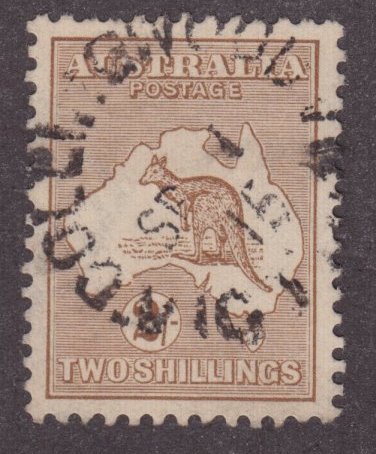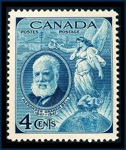
Discussion - Member to Member Sales - Research Center

Discussion - Member to Member Sales - Research Center

Identified two resources which have proven helpful in this endeavor. Determining the correct identity of individual stamps is important as the catalogue values for the different varieties can vary significantly.
The first is a software app called EZPerf. A short tutorial (EZPerf: How to Identify the 1911 Stamps of Iran) is available free online. The tutorial focuses on the Ahmad Shah Qajar series of 1911 - 21 which includes two printing methods, multiple perforation options, and original as well as reprint varieties. As a starting point, Scott segregates the stamps of this series into "tall" and "short" varieties based on the height of the cliché or portrait. The difference in height is the result of printing method. Specifically, "wet" vs "dry" printing.
Once you have scanned the stamp, EZPerf allows you to draw a vertical line across the cliché which is very helpful in distinguishing between "tall" (23 mm) and "short" (22.5 mm) varieties. Once you have determined the height, you can use the app to measure the perforations.
The second resource is an APS Stamp Chat entitled "How to Identify Common Forgeries of Pre-1925 Persia" with renown philatelist Beharuz Nassre. This episode of Stamp Chat runs about 65 mins. Mr. Nassre is a highly regarded subject expert, and his presentation covers several of the issues which appeared prior to 1925. I watched the video all the way through the first time. However, given the immense amount of information being imparted, I found it helpful to view the video a second time which allowed me to focus on a specific issue and to take notes.
With respect to the 1911-21 Ahmad Shah Qajar series, Mr. Nassre shared two quick distinguishing tips. Stamps with a perforation of 11.5 x 11 are likely originals, while stamps with a perforation of 11.5 are likely reprints. Further, some of the reprint issues were produced using worn plates. As a result, there can be fine vertical cracks which can be seen on the area to the right side of the cliché/portrait . (There is also a distinguishing tip specific to stamp gum color and quality. However, the stamps I am working with are non-mint.)
These two resources, along with good lighting and a loop magnifier, have helped make identification of some of my pre-1925 Persia material a bit easier.

3 Members
like this post.
Login to Like.

11:20:18am
Morning from AZ! As a long time collector/seller/article submitter-allow me to help.
First you got find a known 'Short' stamp.
Secondly-well how do you do that?
Thirdly-line them up side by side with perfs on the vertical and horizontal bottom.
Notice the stamp on the left? It's shorter than the one on the right-thus it's a 'short'.
As seen, you can eliminate the 0.05mm difference in a quickness. And the older our eyes get the harder to see the measurments. Well, It's how I can figure out shorts and talls, for me.
Once you look at a thousand of these guys, you will see them with ease-
I hope this helps you, and shoot me any pictures of early Persian stamps you might need assistance on-
Thanks
Lee


6 Members
like this post.
Login to Like.
03:22:05pm
Spent a good portion of the last couple of days attempting to work thru a pile of pre-1925 Iran (Persia) stamps. As many seasoned philatelists are aware, material from this time period can be particularly vexing as it includes numerous forgeries as well as reprints.
Identified two resources which have proven helpful in this endeavor. Determining the correct identity of individual stamps is important as the catalogue values for the different varieties can vary significantly.
The first is a software app called EZPerf. A short tutorial (EZPerf: How to Identify the 1911 Stamps of Iran) is available free online. The tutorial focuses on the Ahmad Shah Qajar series of 1911 - 21 which includes two printing methods, multiple perforation options, and original as well as reprint varieties. As a starting point, Scott segregates the stamps of this series into "tall" and "short" varieties based on the height of the cliché or portrait. The difference in height is the result of printing method. Specifically, "wet" vs "dry" printing.
Once you have scanned the stamp, EZPerf allows you to draw a vertical line across the cliché which is very helpful in distinguishing between "tall" (23 mm) and "short" (22.5 mm) varieties. Once you have determined the height, you can use the app to measure the perforations.
The second resource is an APS Stamp Chat entitled "How to Identify Common Forgeries of Pre-1925 Persia" with renown philatelist Beharuz Nassre. This episode of Stamp Chat runs about 65 mins. Mr. Nassre is a highly regarded subject expert, and his presentation covers several of the issues which appeared prior to 1925. I watched the video all the way through the first time. However, given the immense amount of information being imparted, I found it helpful to view the video a second time which allowed me to focus on a specific issue and to take notes.
With respect to the 1911-21 Ahmad Shah Qajar series, Mr. Nassre shared two quick distinguishing tips. Stamps with a perforation of 11.5 x 11 are likely originals, while stamps with a perforation of 11.5 are likely reprints. Further, some of the reprint issues were produced using worn plates. As a result, there can be fine vertical cracks which can be seen on the area to the right side of the cliché/portrait . (There is also a distinguishing tip specific to stamp gum color and quality. However, the stamps I am working with are non-mint.)
These two resources, along with good lighting and a loop magnifier, have helped make identification of some of my pre-1925 Persia material a bit easier.

3 Members
like this post.
Login to Like.
IPDA past chairman, Sacramento Philatelic Society #2112-past vice president, ISWWSC #2966, Iran philatelic study circle, US Army Veteran, Grandfather of 6, stamp collector/seller!
29 Apr 2023
11:20:18am
re: Iran: Pre 1925 Persia
Morning from AZ! As a long time collector/seller/article submitter-allow me to help.
First you got find a known 'Short' stamp.
Secondly-well how do you do that?
Thirdly-line them up side by side with perfs on the vertical and horizontal bottom.
Notice the stamp on the left? It's shorter than the one on the right-thus it's a 'short'.
As seen, you can eliminate the 0.05mm difference in a quickness. And the older our eyes get the harder to see the measurments. Well, It's how I can figure out shorts and talls, for me.
Once you look at a thousand of these guys, you will see them with ease-
I hope this helps you, and shoot me any pictures of early Persian stamps you might need assistance on-
Thanks
Lee


6 Members
like this post.
Login to Like.

